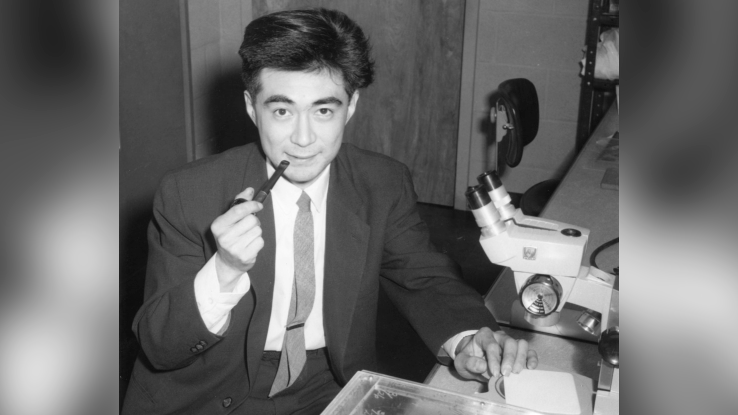
Professor Ken-Ichi Kojima in lab. University Archives Photograph Collection. People (UA023.024). Special Collections Research Center at NC State University Libraries

Professor Ken-Ichi Kojima in lab. University Archives Photograph Collection. People (UA023.024). Special Collections Research Center at NC State University Libraries
The Special Collections Research Center (SCRC) at the NC State University Libraries houses many valuable collections, including the ever-growing University Archives. But the SCRC does much more than just catalog materials for faculty and researchers. The Libraries also compiles materials and information from the archives into historical timelines that tell untold stories about NC State.
The Asian and Asian American Historical State Timeline is the most recent addition to this ongoing body of work that includes timelines for groups underrepresented in the university’s history such as African Americans, Native Americans, and the LGBTQIA+ community, as well as more general categories like Athletics, Student Body Presidents, and the construction of Centennial Campus. The Historical State Timelines are publicly available on the Libraries website.
Libraries Fellow Victor Betts did the archival research for the Asian and Asian American timeline, for which he was recognized by the Office for Institutional Equity and Diversity (OIED) during Asian Pacific Islander Desi American (APIDA) Heritage Month in May.
“This work provides context to contemporary issues by connecting us to stories and images of the past that are not part of the dominant narrative,” Betts says. “In addition, curated information, like this historical timeline, is another way to make archives and primary sources accessible to users remotely, which is especially important today in the time of COVID-19 and racial injustice.”
How Betts came to do this research speaks to the unique eyes and mind that librarians and archivists bring to bear. He was actually researching Justina Williams, NC State’s first African American academic staff member (hired in 1958), in the archives. She worked closely with Dr. Ken-ichi Kojima in his genetics lab.
“That led me to stumble across materials pertaining to Asian researchers and scholars in our collections,” Betts says. “Without Justina Williams, the stories of Asians and Asian Americans at NC State would have been overlooked for much longer.”
Betts chose images from the archives, and researched and wrote informative captions for the timeline. Users can scroll through highlights dating from the 1890s to present-day, or click on a specific decade to jump to that period of the timeline. It’s a slow, continual process to bring the university’s untold stories out of a vast archive, and it requires a certain curatorial attention.
“Some of the continuing work I am doing with the timelines is combing through to look for problematic descriptions and changing them to better describe subjects of a given archival record,” Betts says of the work. “For example, changing the description ‘female slave’ to ‘enslaved woman.’”
“The other continuing work is updating and adding new information to the timelines,” he continues. “I have been conducting outreach to Asian American student organizations on campus and talking to them about the archives and the importance of preserving their stories and voices in campus history. It's my hope to have more of our campus communities recognize and value the importance of the voices, stories, and histories of community members who we do not see or hear in the legacy narrative of our university.”
For more about Betts’ work with the Asian and Asian American Historical State Timeline, read his post on the SCRC blog.